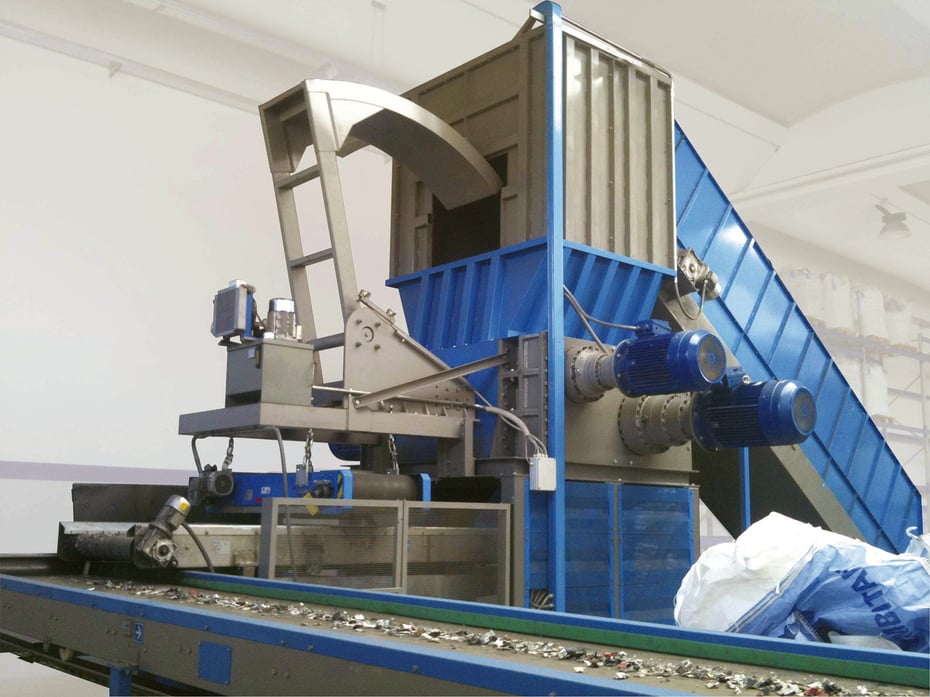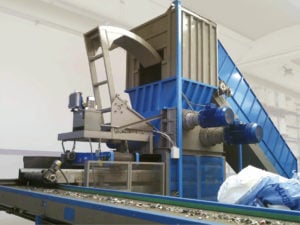The legislation in force provides that all WEEE (Waste Electrical and Electronic Equipment) are divided into two macro-categories:
- Household WEEE, used in the home
- Professional WEEE, used in the workplace
It is important to underline that this macro-division does not concern the type of waste, but only its usage context. The computer that each of us uses at home is in fact classified, at the time of its disposal, as domestic WEEE, but if the same model of electronic device is purchased and used in an office, at the time of its disposal it is still categorize as professional WEEE, even if from all points of view the two objects are absolutely identical.
How household WEEE is disposed of
Domestic WEEE can be properly disposed of by following two main ways:
- transferring them to the collection areas managed by the Municipalities
- returning them to retailers, who will store them temporarily and send them to centers specialized in their treatment.
In the first case, the disposal can be made directly by individual citizens in the designated areas in the municipal area. The law establishes precise rules on the methods of collection of domestic WEEE by the Municipalities, all aimed at encouraging the differentiation of this type of waste and its correct treatment. Specifically, the rules underline that “Municipalities must ensure the functionality and adequacy, due to the density of the population, of the separate collection systems for WEEE from private households and accessibility to the relative collection centers” and that the collection of WEEE produced within the municipal area must always be free. If a municipality does not have a suitable collection center, it is required to enter into agreements with neighboring municipalities to allow its citizens to have a space in which to deliver their waste.
The second possibility is to return the WEEE directly to those who sell them.
This disposal method is the one we all use, usually, when we buy a new large appliance (such as a refrigerator or a washing machine) and, upon delivery, we ask the retailer to take away the old device that we no longer use. This method – which takes the name of “one versus one” – provides that the retailer undertakes to take charge of the free disposal of a WEEE for each new appliance that he sells.
Not everyone knows, however, that for some years now a law has obliged all retailers with a retail area of over 400 square meters to collect all small domestic WEEE for free, even if those who return them do not buy any new products (“one versus zero”). This rule was introduced to encourage people to sort out small household WEEE, which currently has the lowest rate of return. Often, in fact, small electronic waste is disposed of as unsorted waste, and this bad habit can have serious consequences from the point of view of environmental pollution and health risks; moreover, in this way important materials and resources are not exploited which, if recovered, could be reused and which, instead, end up indiscriminately in landfills, where they remain for very long periods of time.
How professional WEEE are disposed of
The disposal of the professional WEEE request a particular attention, because te com because the company or organization that produced the waste must be able to demonstrate that it has disposed of it correctly, under penalty of incurring penalties.
The problem of the treatment of professional WEEE is particularly felt because all production activities use a large amount of electronic devices – computers and monitors, photocopiers, scanners and other work tools, but also objects such as air conditioners, small refrigerators made available to employees, coffee machines and so on – which, by their nature, are rapidly becoming obsolete and need to be replaced frequently. A company that employs dozens of employees and provides each of them with a computer and other essential work tools inevitably has to replace many electronic devices every year, thus producing a large amount of WEEE whose disposal must remain traceable.
Professional WEEE, unlike domestic WEEE, cannot be delivered to municipal pitches, but has to be delivered to specialized operators who issue a declaration in which they confirm that they have taken charge of the objects and communicate the data relating to the treatment plant in which they will be given to be processed. Usually these operators also fill in the Waste Identification Form, which is necessary to differentiate the different WEEE from each other and favor their correct treatment once they have been delivered to the authorized disposal center.
If you want to learn more about the legislation regarding the WEEE disposal and learn al the details relevant to the present rules, download our guide!


